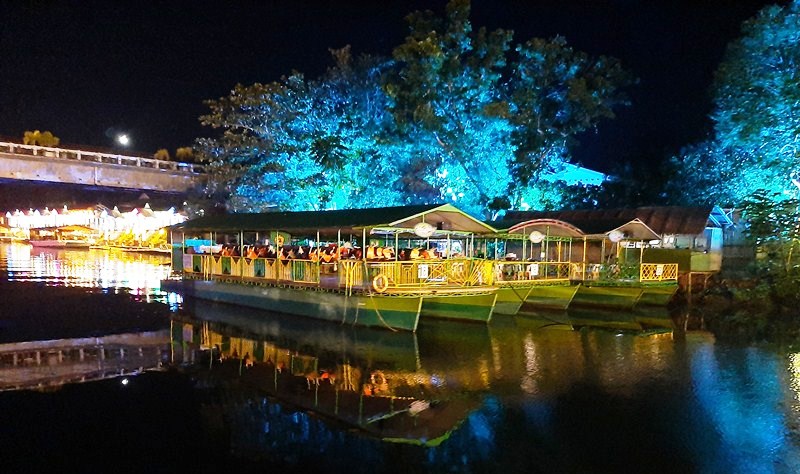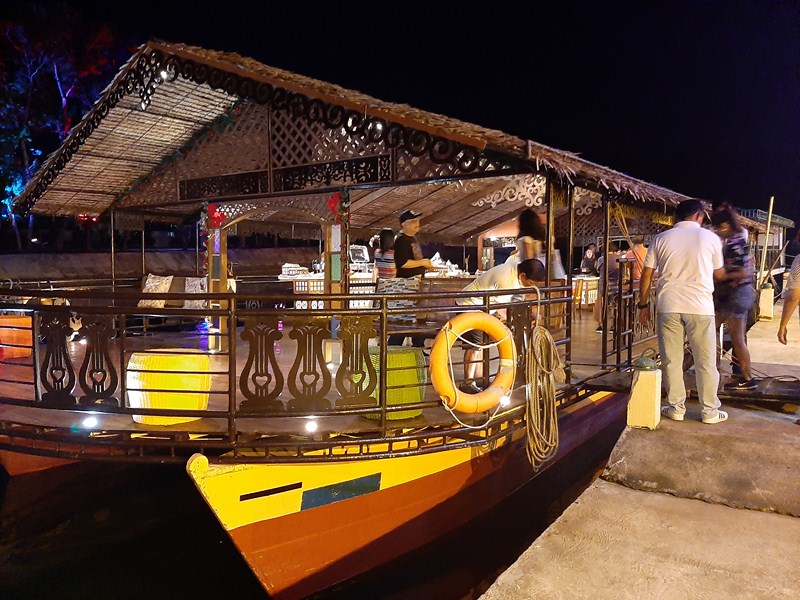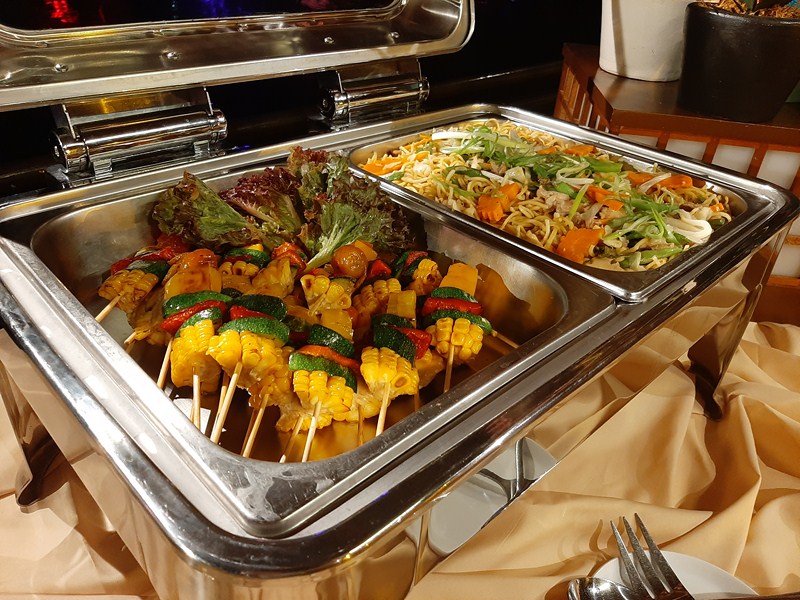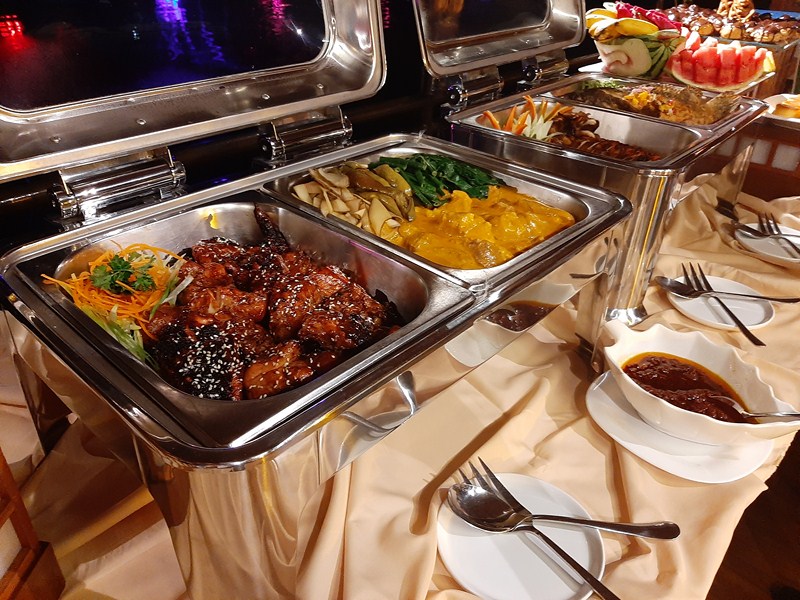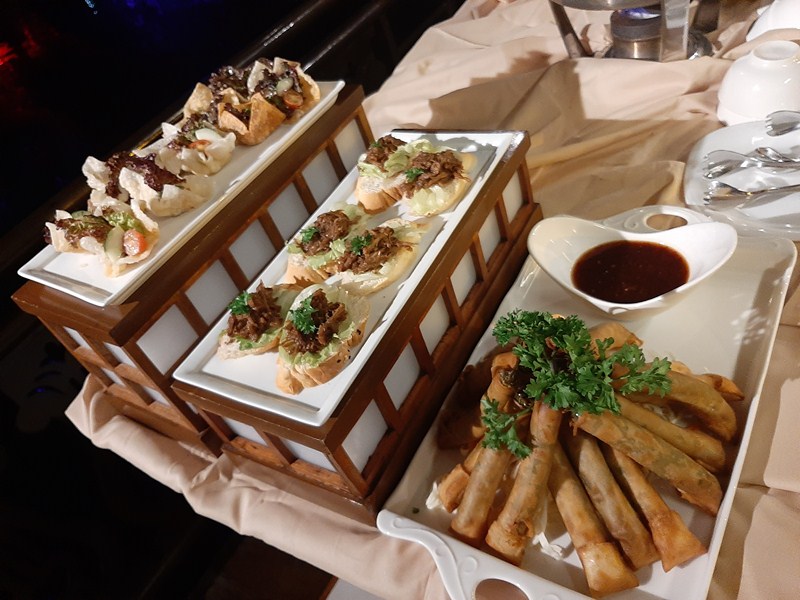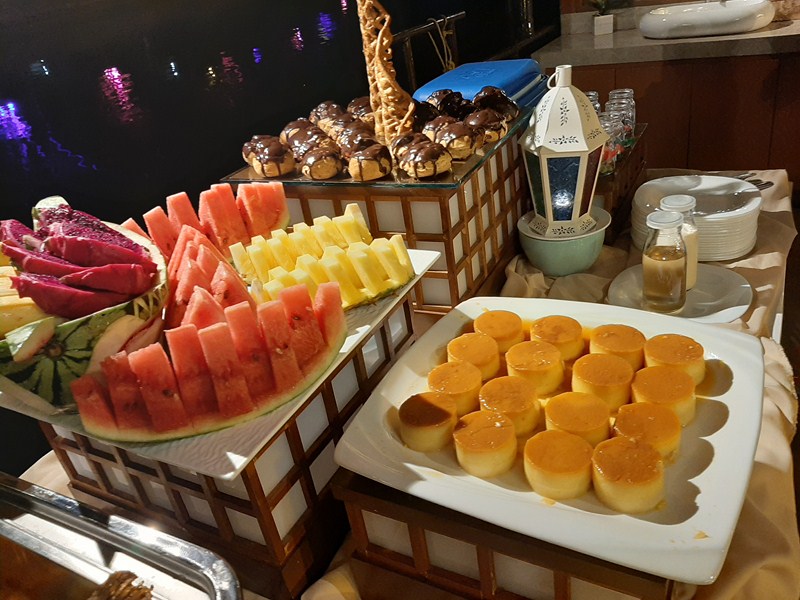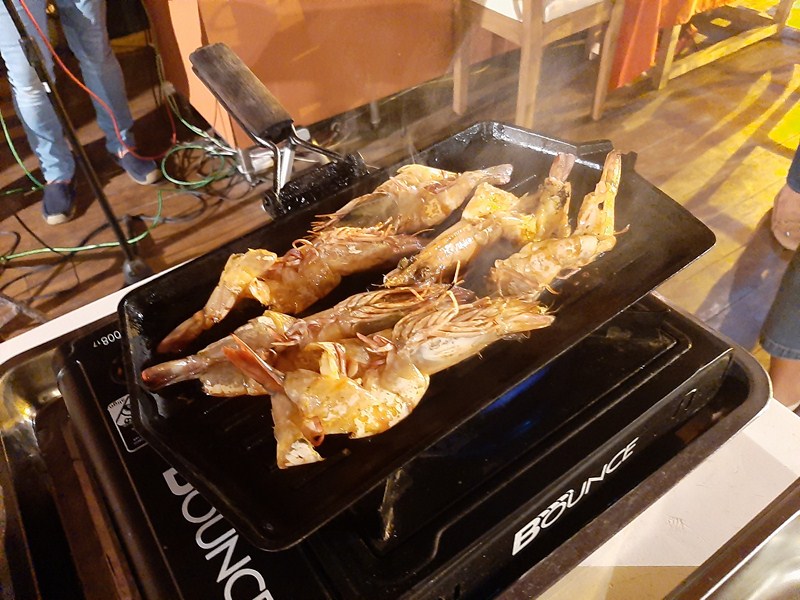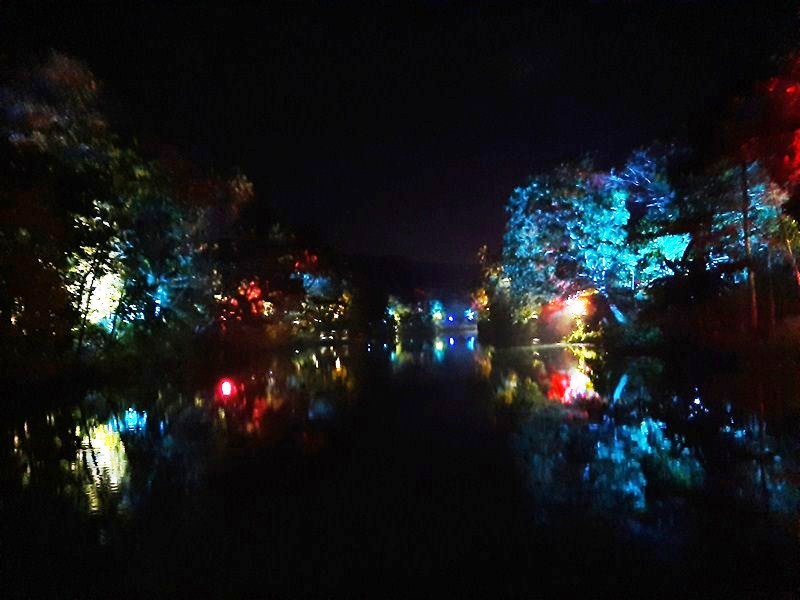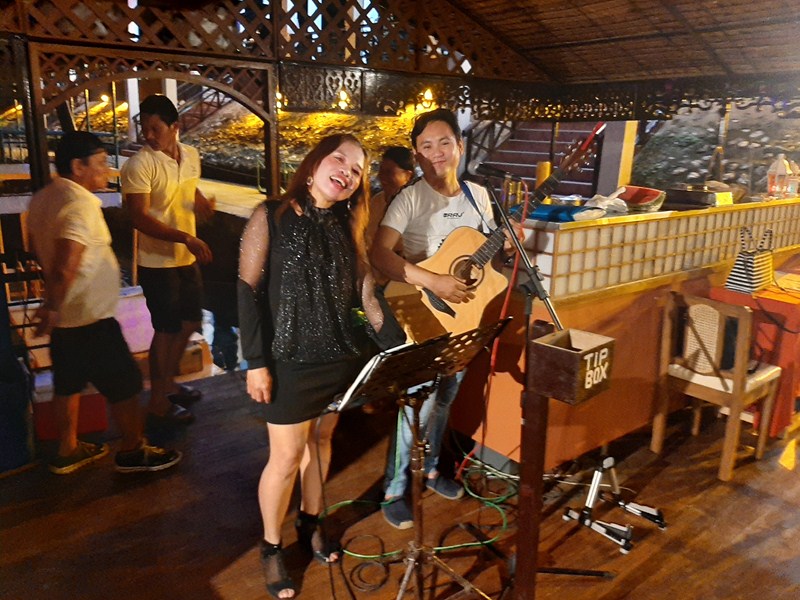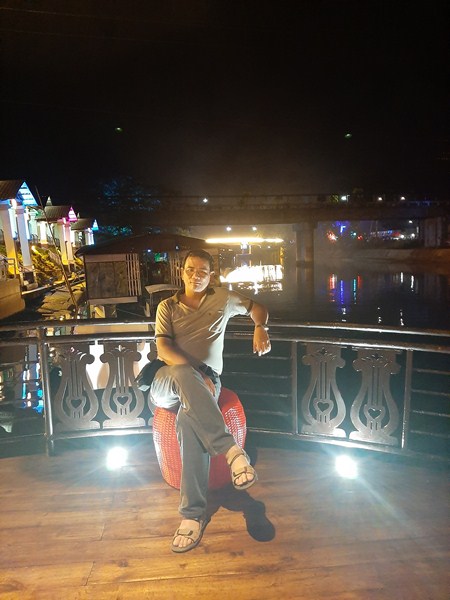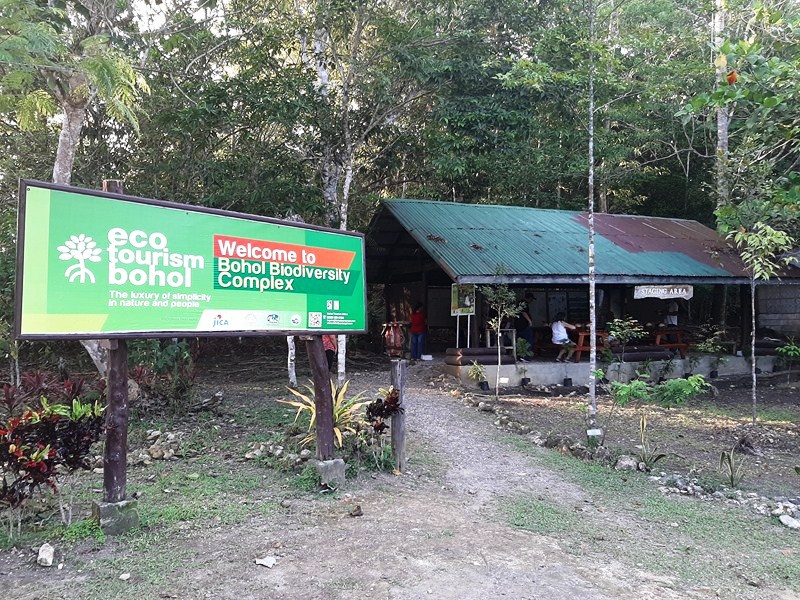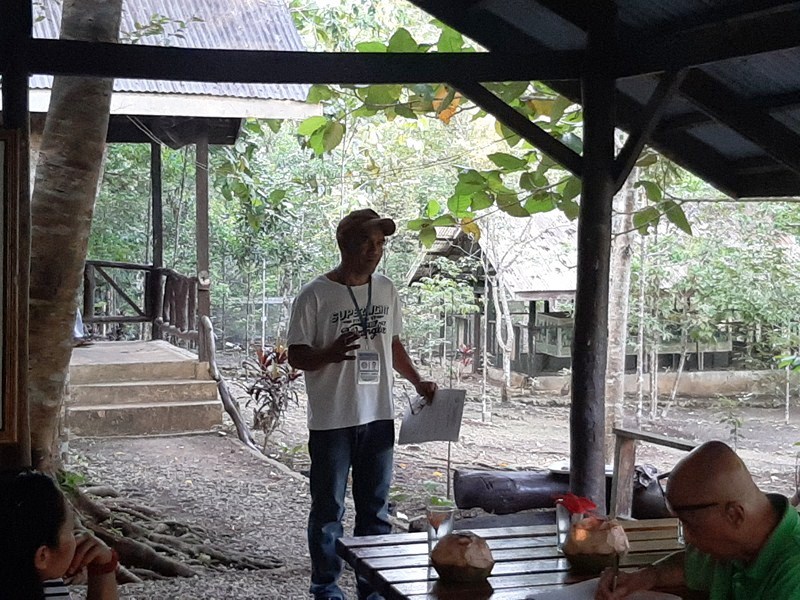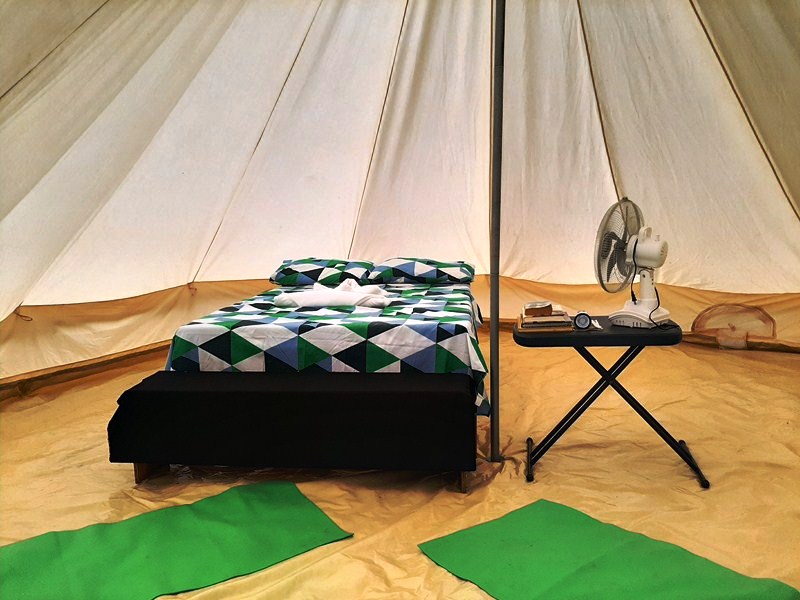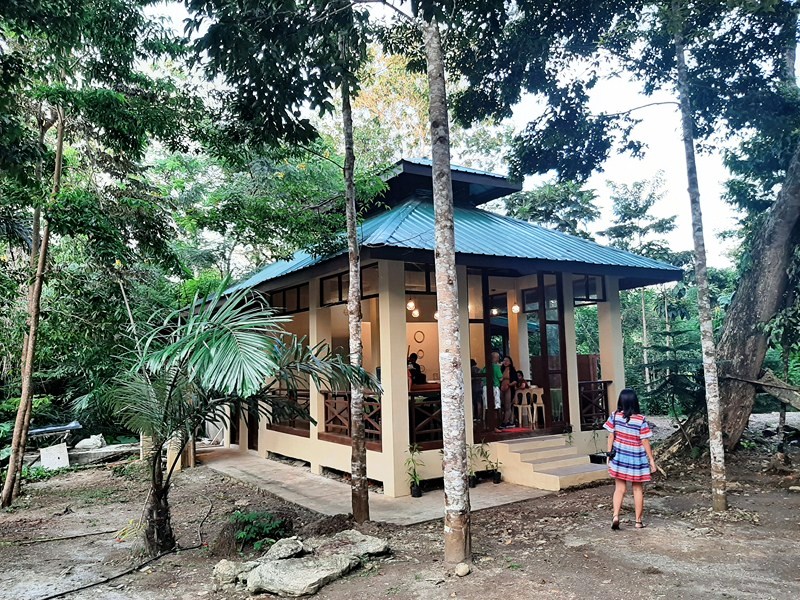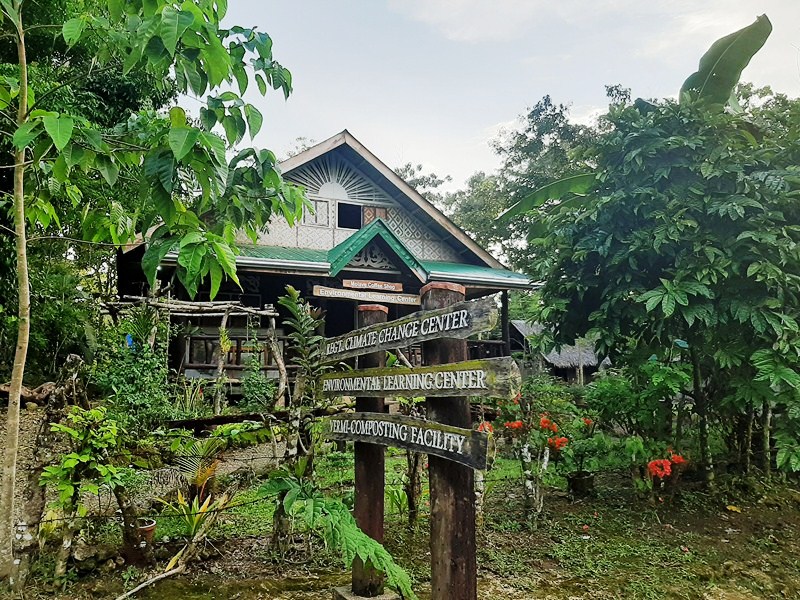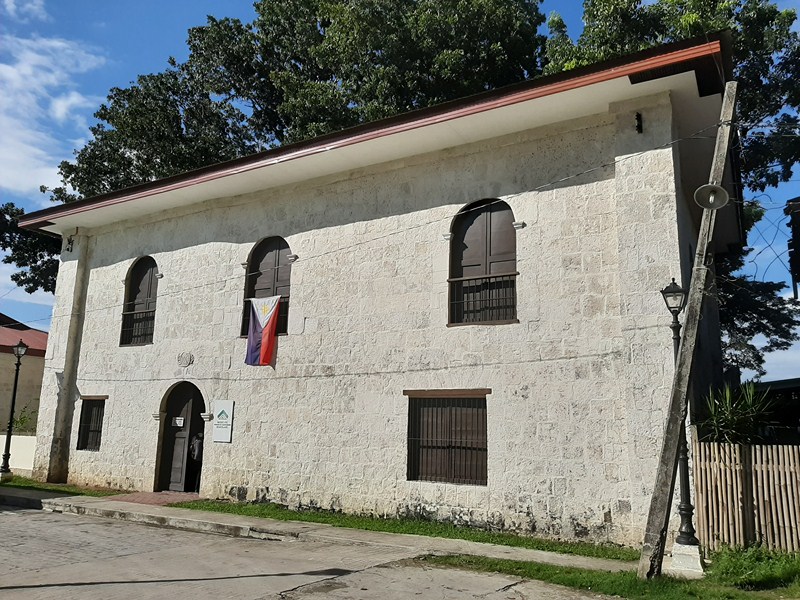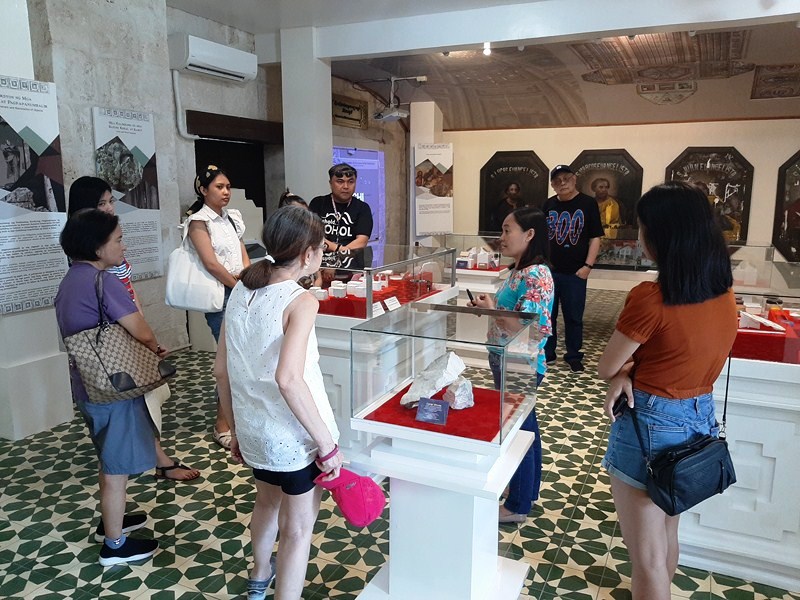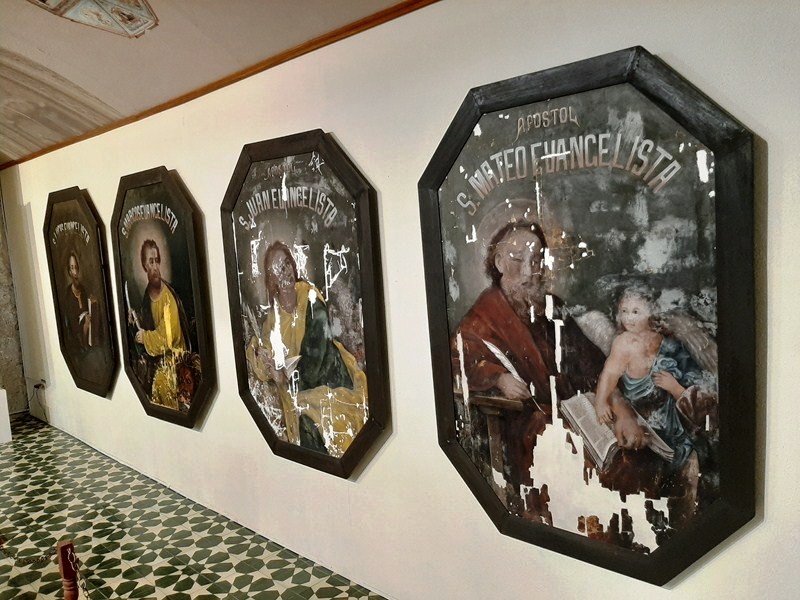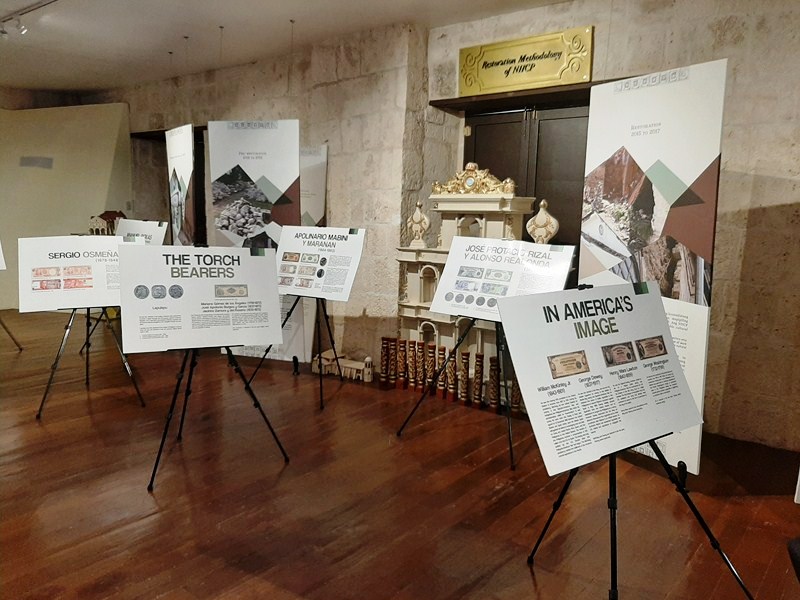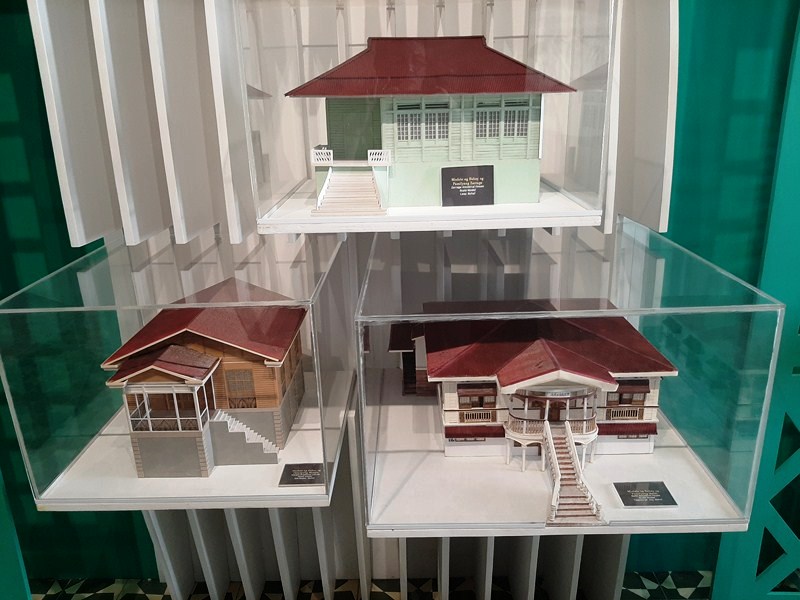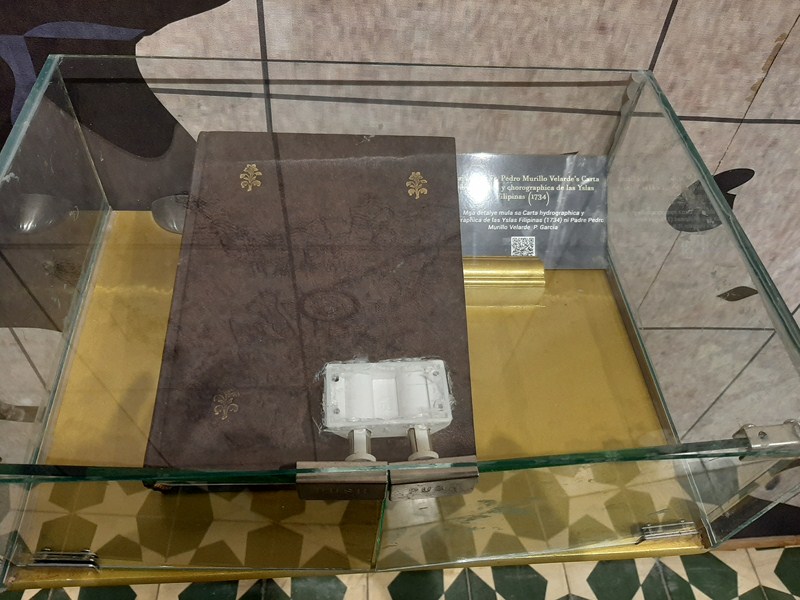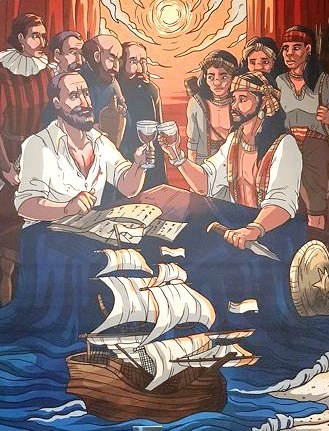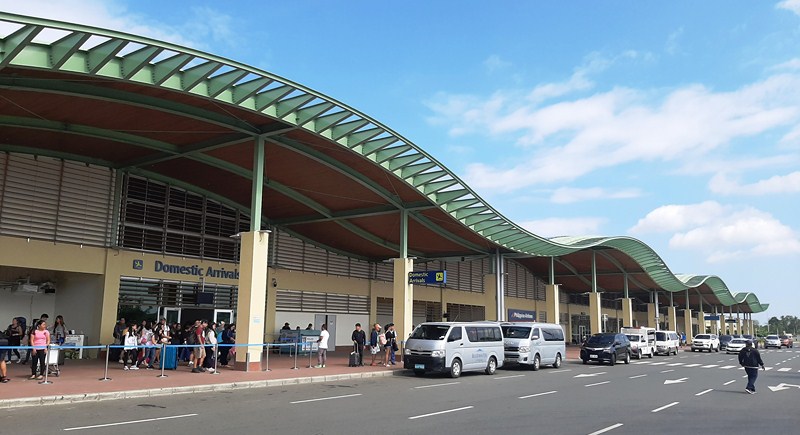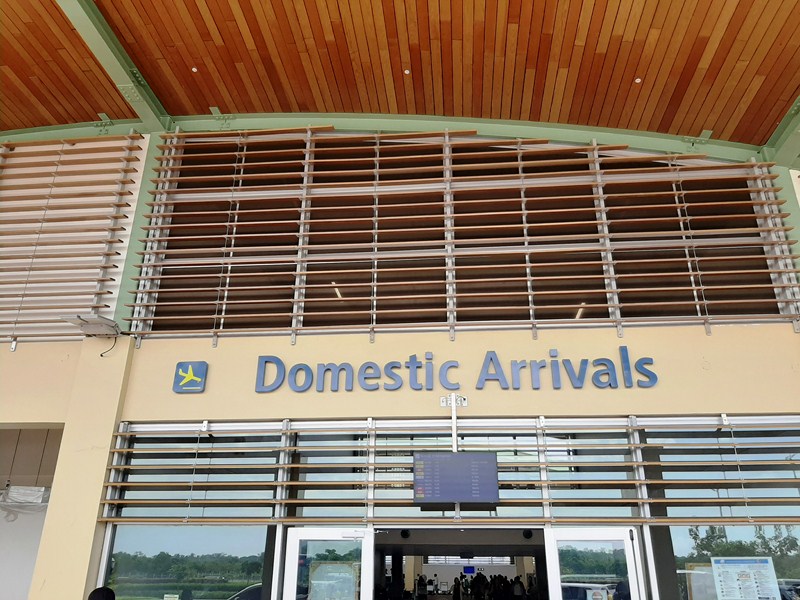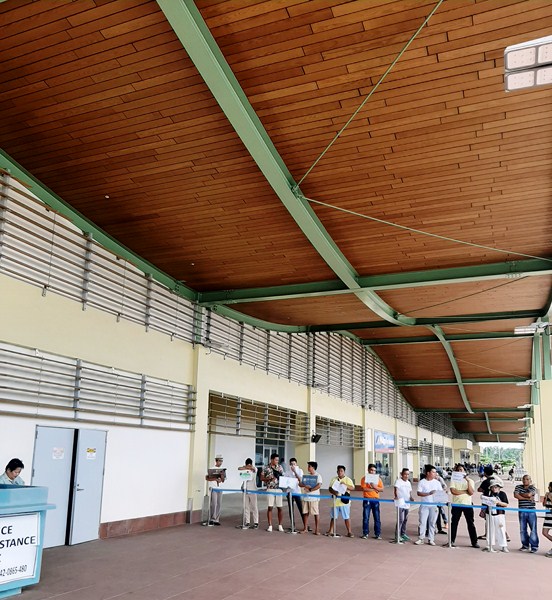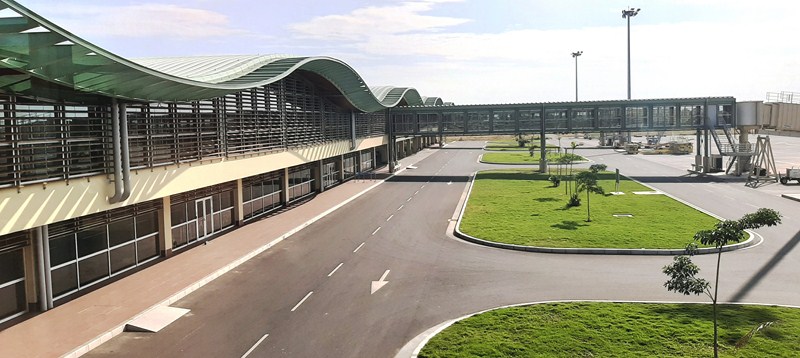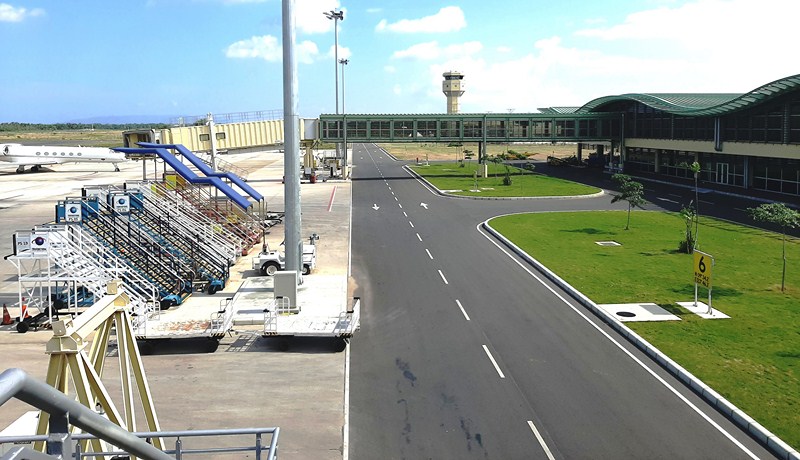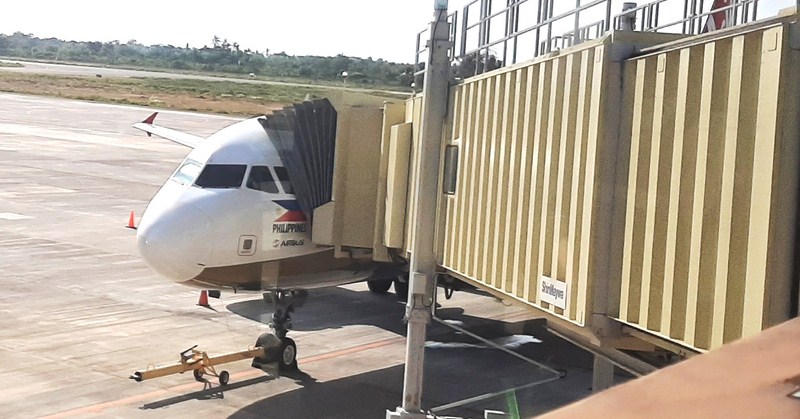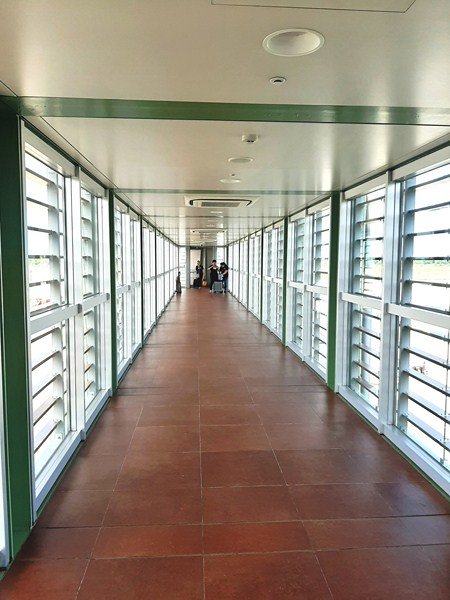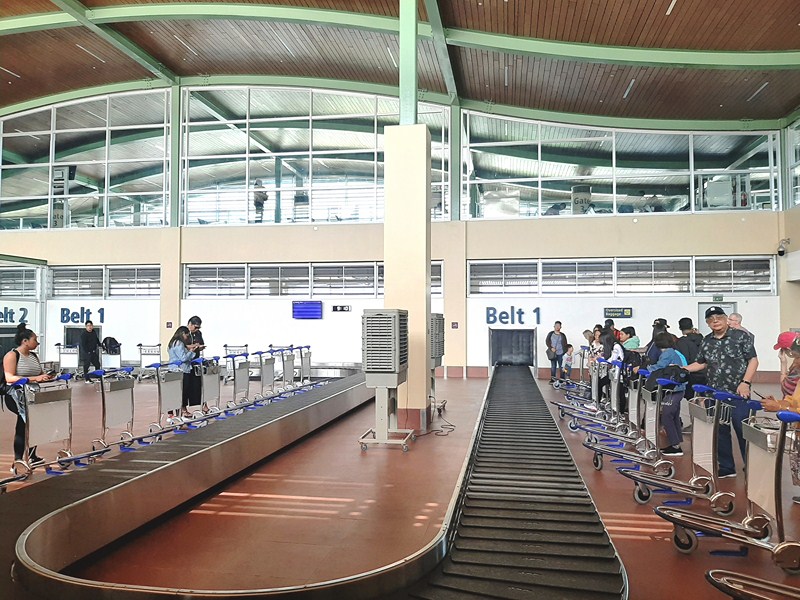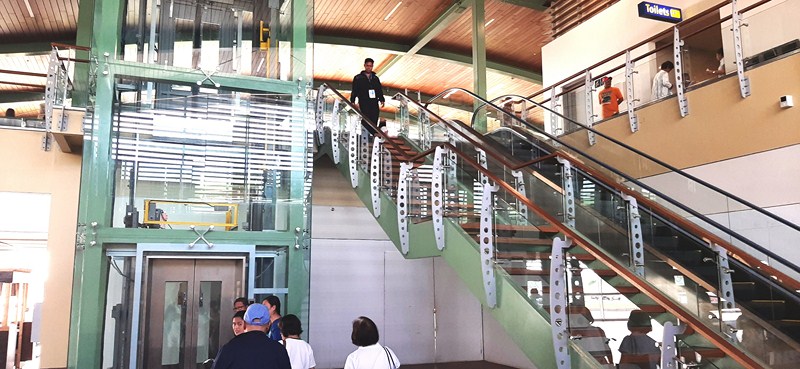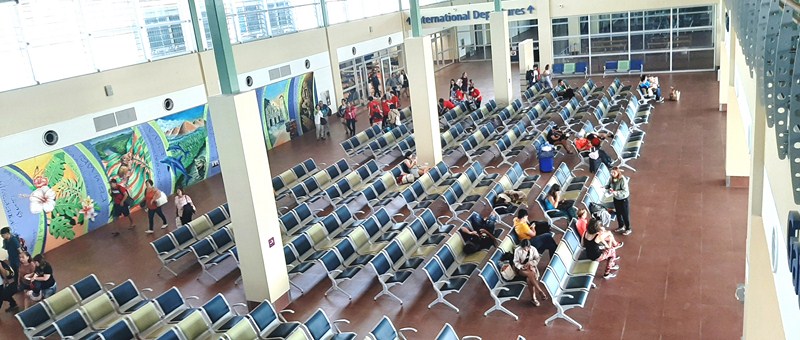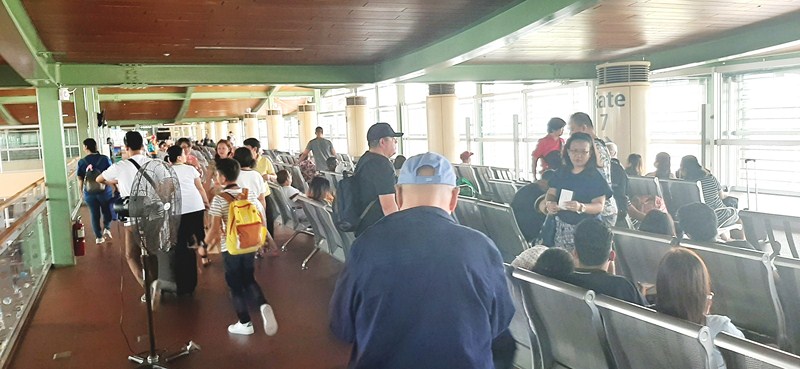Part of the Panglao Bluewater Resort-sponsored CountrysideTour
From the Bohol Biodiversity Center in Bilar, we again boarded our coaster for the 19.3-km. (30-min.) drive to the Loboc River Port where we were to try out the Loboc Night River Cruise of Village Floating Resto and Cruises as guests of Loboc Mayor Leon A. Calipusan and cruise owner Ms. Maria Lourdes Tuyor-Sultan, both of whom were joining us on the cruise. This would be my first nighttime cruise of the river (the others were during the day).
Check out “Bohol Biodiversity Complex,” “Loboc River Cruise (2014)” and “Loboc River Cruise (2003)”
The first of its kind in the Philippines, this nighttime cruise is a welcome diversion to the day cruise which, for quite a time now, has caught the fancy of local and foreign tourists. The four floating restaurant operators (the others are Mary Jo Varquez of Busay Monarch, Sonia Balbido of Long River Cruise Floating Resto and Tessie Labunog-Sumampong of Loboc Riverwatch Floating Resto) have been servicing an average of 800 guests daily for the upstream daytime cruising.
All 19 floating restaurants are served by a commissary which employed a chef to oversee food preparations for the hundreds of tourists who board and eat at the restaurants each month.
The night cruise, introduced by the Provincial Tourism Council as an option to help ease congestion at the river, actually had its beginnings in 2006.
That year, Gov. Erico Aumentado embarked on the lighting of the Loboc River, with Chinese businessman (the chairman of Filipino multinational Liwayway Group whose flagship enterprise is the manufacture and distribution of Oishi snacks) and Philippine Special Ambassador to China Carlos Chan funding the riverbank lighting project and commissioning lighting experts from China to determine the requirements of Loboc River.
Thus, the P13.5 million project of lighting the whole 2.85 km. stretch of the Loboc River was born, with some 450 lampposts and floodlights being installed from the modern, PhP10-million (also partly funded again by Mr. Chan), 120-m. long docking port (which houses the eco-tourism center and includes the tourism office, a visitor’s lounge and air-conditioned comfort rooms) all the way up to the Busay Falls, including the two bailey bridges crossing the river.
Our cruise was sort of an inaugural run as the original night cruise was discontinued after the October 15, 2013 earthquake damaged the lighting system. Cruising the Loboc River at night, soothing to the spirit, was a different experience altogether, relaxing both body and mind and infusing peace and harmony to weary souls.
The cool night air, the eerie lights on the riverbanks (lighting up the palm trees and putting to shadow other vegetation) and their colorful reflections shimmering on the waters coupled with the soft serenading music of the performing band while we dined on a delicious buffet spread lent a romantic air to the night cruise.
The night scene, with myriads of shimmering lights reflected on the waters, casted a shimmering splendor on the river.
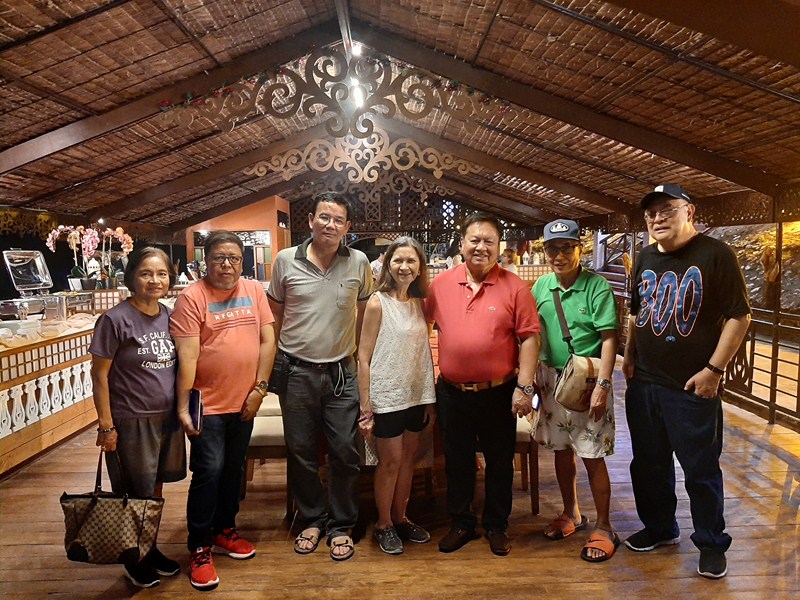
L-R: Ms. Corazon Cagahastian, Mr. Diego Cagahastian, the author, Ms. Teresa Chanco, Loboc Mayor Leon A.Calipusan, Mr. Pete Dacuycuy and Mr. Pedro “Boo” Chanco.
Village Floating Resto & Cruises: Brgy. Valladolid, Loboc, Bohol. Tel: (038) 537-9223 and (038) 501-8078. Mobile number: (0928) 507-7627. E-mail: villagefloatingresto@yahoo.com.
Bohol Tourism Office: Governor’s Mansion Compound, C.P.G. Ave. North, Tagbilaran City, 6300 Bohol. Tel: +63 38 501-9186. E-mail: inquire@boholtourismph.com.
Panglao Bluewater Resort: Bluewater Rd., Sitio Daurong, Brgy. Danao, Panglao, 6340 Bohol. Tel: (038) 416-0702 and (038) 416-0695 to 96. Fax: (038) 416-0697. Email: panglao@bluewater.com.ph. Website: www.bluewaterpanglao.com.ph. Manila sales office: Rm. 704, Cityland Herrera Tower, Rufino cor. Valera Sts., Salcedo Village, 1227 Makati City, Metro Manila. Tel: (632) 817-5751 and (632) 887-1348. Fax: (632) 893-5391.

